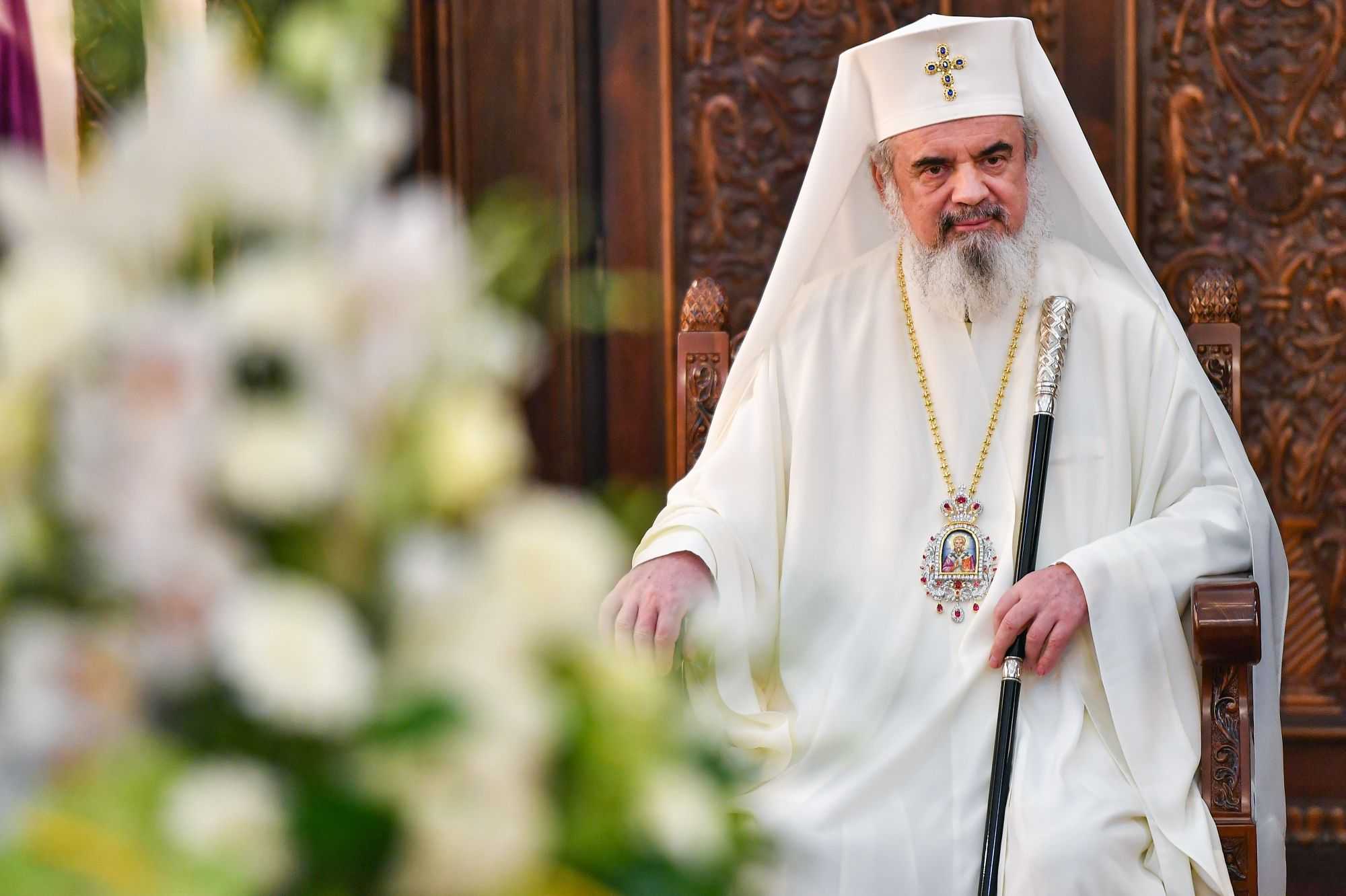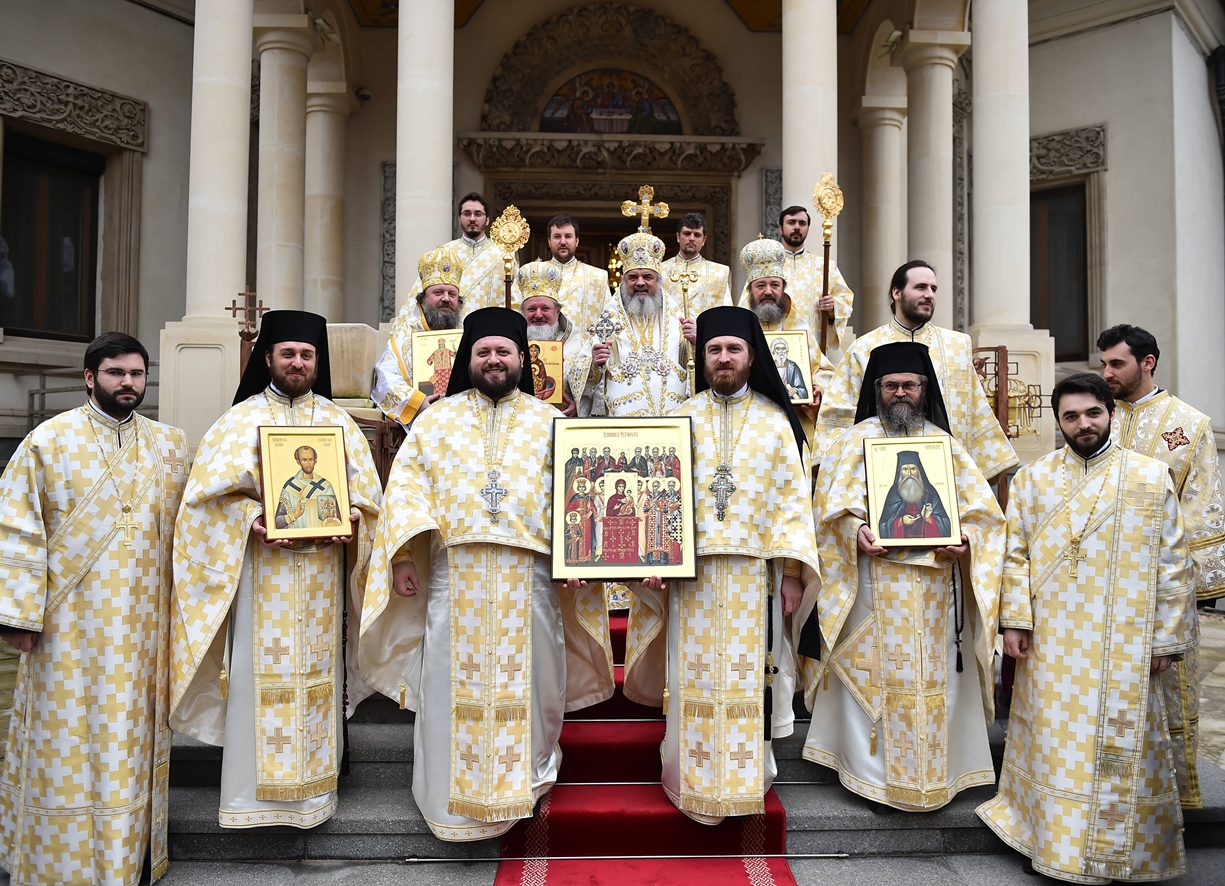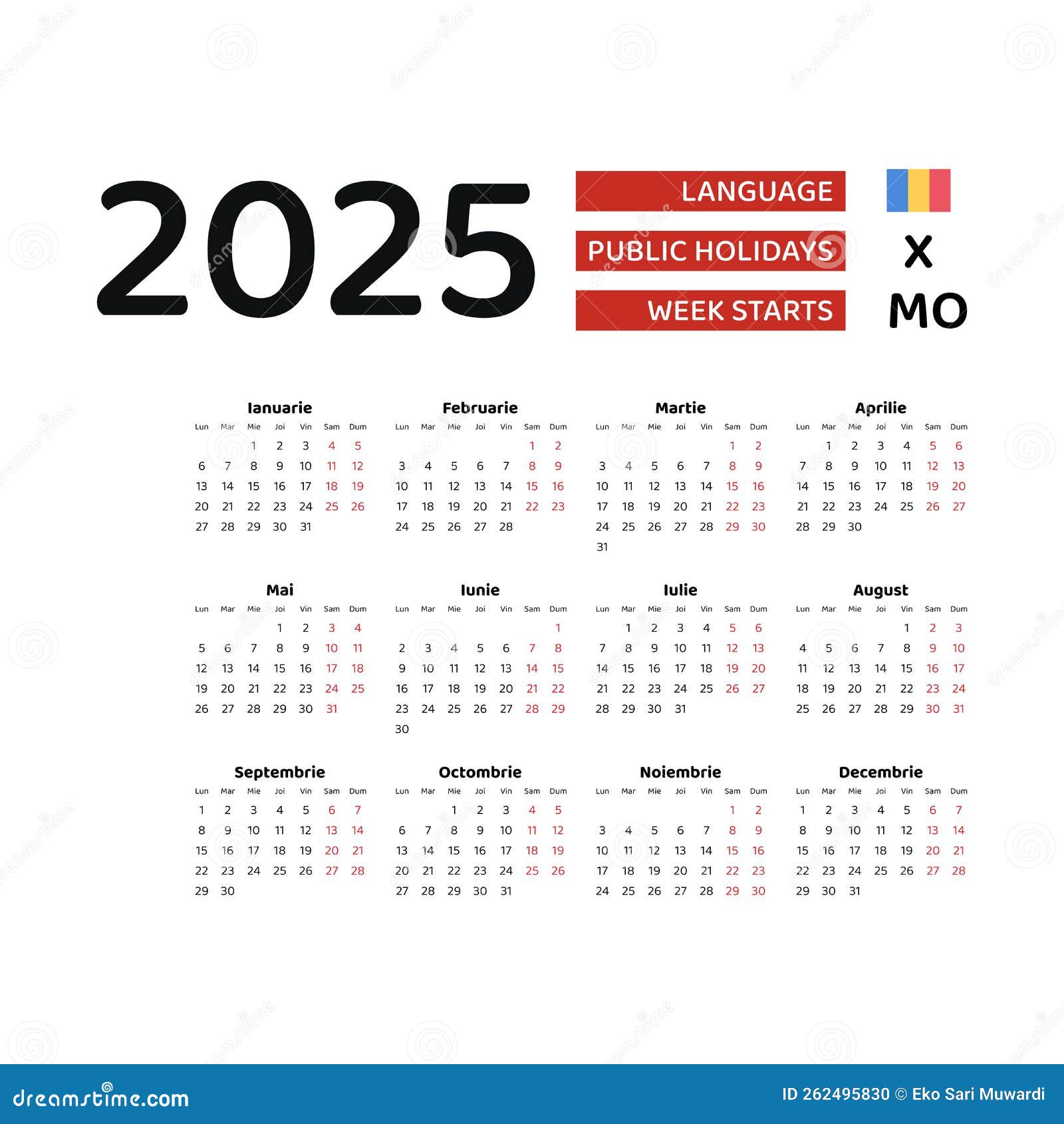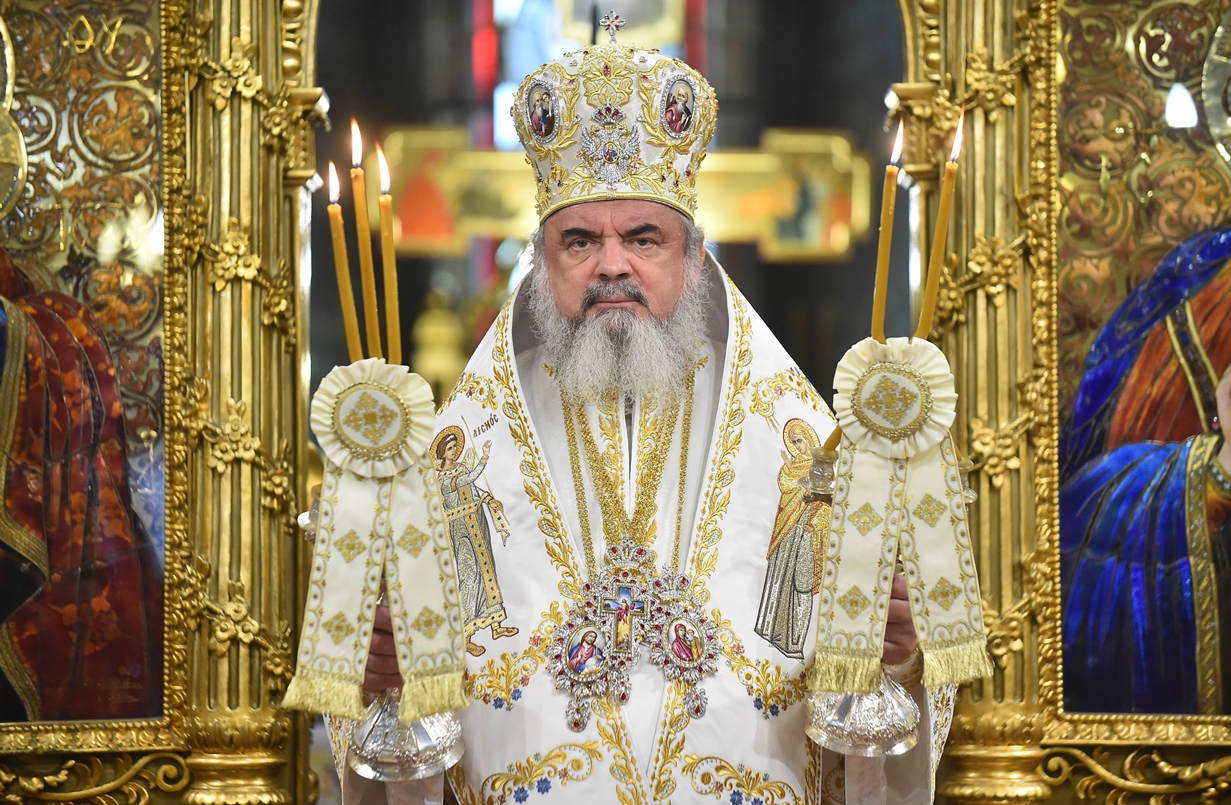The Romanian Orthodox Patriarchate Calendar 2025: A 12 months Of Religion, Custom, And Reflection
The Romanian Orthodox Patriarchate Calendar 2025: A 12 months of Religion, Custom, and Reflection
Associated Articles: The Romanian Orthodox Patriarchate Calendar 2025: A 12 months of Religion, Custom, and Reflection
Introduction
On this auspicious event, we’re delighted to delve into the intriguing matter associated to The Romanian Orthodox Patriarchate Calendar 2025: A 12 months of Religion, Custom, and Reflection. Let’s weave attention-grabbing data and supply contemporary views to the readers.
Desk of Content material
The Romanian Orthodox Patriarchate Calendar 2025: A 12 months of Religion, Custom, and Reflection

The Romanian Orthodox Patriarchate calendar for 2025, like its predecessors, is greater than a easy scheduling device; it is a dwelling testomony to the enduring religion and wealthy traditions of the Romanian Orthodox Church. It serves as a information for the trustworthy, marking vital liturgical feasts, commemorative days, and durations of fasting and reflection, shaping the non secular lifetime of thousands and thousands throughout Romania and the Romanian diaspora. This text will delve into the important thing options of the 2025 calendar, exploring its significance throughout the context of Romanian Orthodox spirituality and its broader cultural impression.
The Construction and Significance of the Calendar:
The Romanian Orthodox Patriarchate calendar, in contrast to the Gregorian calendar utilized in secular contexts, follows the Julian calendar, adjusted for the variations accrued over centuries. Because of this the dates of sure feasts could differ from these noticed in different Christian denominations. This adherence to the Julian calendar is a big side of the Church’s identification, reflecting its historic continuity and unwavering dedication to its historical traditions.
The calendar is structured across the liturgical 12 months, which begins on the primary Sunday of Creation (Postul Nașterii Domnului), a interval of preparation for the celebration of Christmas. The 12 months is punctuated by a collection of main feasts, every holding profound theological and historic which means. These embody:
-
Christmas (Crăciun): Celebrated on December twenty fifth (Julian calendar), Christmas marks the start of Jesus Christ, the central occasion in Christian theology. In Romania, this can be a time of household gatherings, conventional carols (colinde), and considerable feasting.
-
Epiphany (Bobotează): Celebrated on January sixth (Julian calendar), Epiphany commemorates the baptism of Jesus Christ within the Jordan River. This present day is marked by the Nice Blessing of Waters, a big ritual carried out in church buildings and rivers throughout the nation.
-
Easter (Paștele): Crucial feast within the Orthodox calendar, Easter celebrates the resurrection of Jesus Christ. The date of Easter varies every year, relying on the lunar cycle, and is set based on the calculations of the Ecumenical Patriarchate of Constantinople. Easter is a time of profound pleasure and renewal, with elaborate church companies and conventional celebrations.
-
Pentecost (Rusaliile): Fifty days after Easter, Pentecost commemorates the descent of the Holy Spirit upon the apostles. It is a time of celebration and reflection on the reward of the Holy Spirit and the institution of the Church.
-
Assumption of the Blessed Virgin Mary (Adormirea Maicii Domnului): Celebrated on August fifteenth (Julian calendar), this feast commemorates the demise and ascension of the Virgin Mary into heaven. It is a vital Marian feast, marked by solemn companies and expressions of devotion.
Past these main feasts, the calendar additionally consists of quite a few different vital days, commemorating saints, martyrs, and vital occasions within the historical past of the Church. Every day holds a selected liturgical significance, influencing the prayers, readings, and hymns utilized in church companies.
Fasting Intervals within the 2025 Calendar:
The Romanian Orthodox calendar additionally outlines a number of fasting durations, that are integral to the non secular lifetime of the trustworthy. These durations of abstinence from sure meals are meant to advertise non secular self-discipline, prayer, and reflection. Probably the most vital fasting durations are:
-
Creation (Postul Nașterii Domnului): A interval of preparation for Christmas, sometimes lasting from November fifteenth to December twenty fourth.
-
Nice Lent (Postul Mare): Probably the most vital fasting interval, lasting for seven weeks main as much as Easter. It is a time of intense non secular self-discipline, prayer, and repentance.
-
Apostle’s Quick (Postul Apostolilor): A shorter fasting interval noticed after Pentecost.
-
Dormition Quick (Postul Adormirii Maicii Domnului): A quick noticed within the lead-up to the Assumption of the Blessed Virgin Mary.
These fasting durations are usually not merely dietary restrictions; they symbolize a dedication to non secular progress and a deeper reference to God. They encourage prayer, reflection, and acts of charity.
The Cultural Impression of the Calendar:
The Romanian Orthodox Patriarchate calendar extends far past the confines of spiritual observance. It considerably influences the cultural panorama of Romania, shaping social customs, household traditions, and even the rhythm of each day life. The foremost feasts are celebrated with elaborate festivities, involving household gatherings, conventional meals, and distinctive customs that fluctuate regionally.
The calendar additionally impacts the agricultural cycle, with sure feasts and fasts coinciding with planting and harvesting seasons. This intertwining of spiritual and agricultural life highlights the deep-rooted connection between religion and the pure world in Romanian tradition.
Moreover, the calendar performs a significant position in preserving and transmitting cultural heritage. Conventional songs, dances, and crafts are sometimes related to particular feasts and holidays, guaranteeing the continuity of Romanian cultural traditions.
The 2025 Calendar: A 12 months of Reflection and Renewal:
The 2025 Romanian Orthodox Patriarchate calendar, with its wealthy tapestry of liturgical feasts and fasting durations, gives a framework for non secular progress and cultural engagement. It invitations the trustworthy to have interaction in a deeper understanding of their religion, to take part actively within the lifetime of the Church, and to have a good time the wealthy traditions which have formed Romanian identification for hundreds of years. The 12 months 2025, like yearly marked by this calendar, presents a chance for reflection, renewal, and a strengthened reference to God and neighborhood. It is a testomony to the enduring energy of religion in shaping particular person lives and the cultural panorama of a nation. By learning and observing the calendar, one features a deeper appreciation for the depth and richness of the Romanian Orthodox custom and its enduring affect on Romanian society. The calendar isn’t just a schedule; it is a roadmap for a non secular journey, a vibrant expression of religion, and a dwelling hyperlink to the previous, current, and way forward for the Romanian Orthodox Church.








Closure
Thus, we hope this text has supplied priceless insights into The Romanian Orthodox Patriarchate Calendar 2025: A 12 months of Religion, Custom, and Reflection. We hope you discover this text informative and useful. See you in our subsequent article!